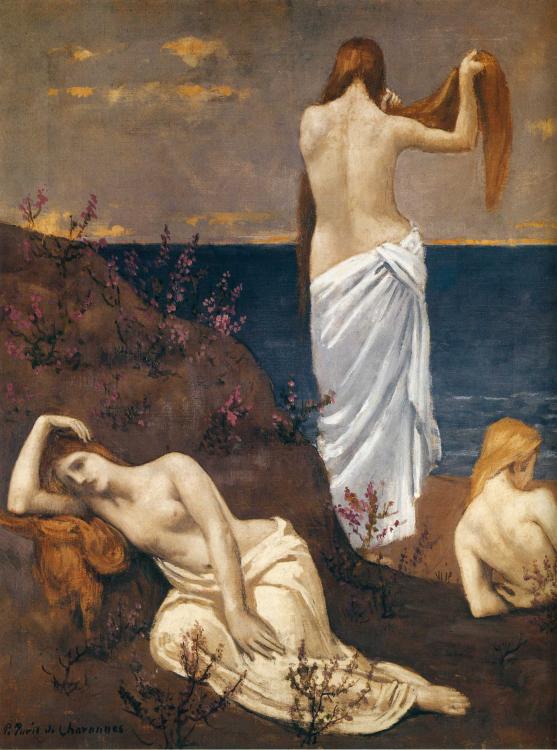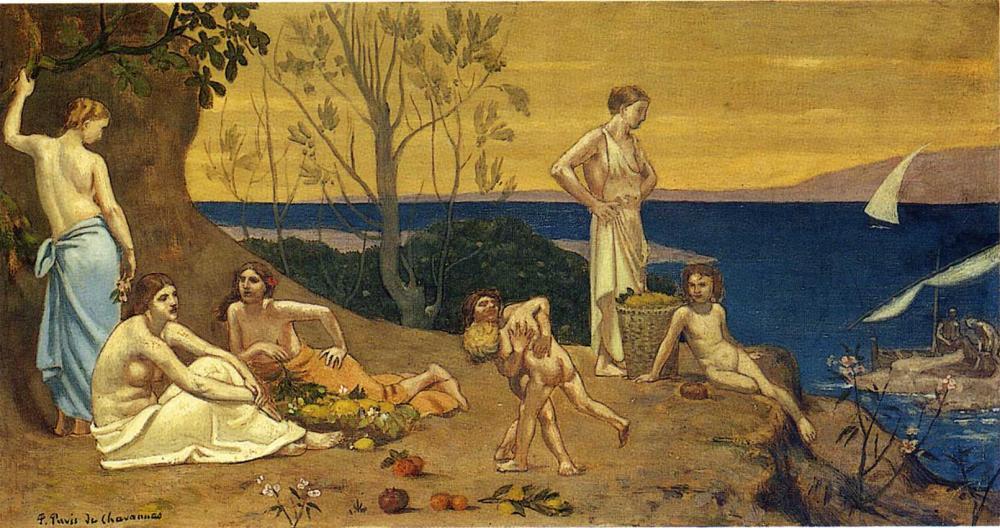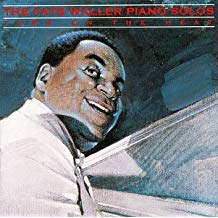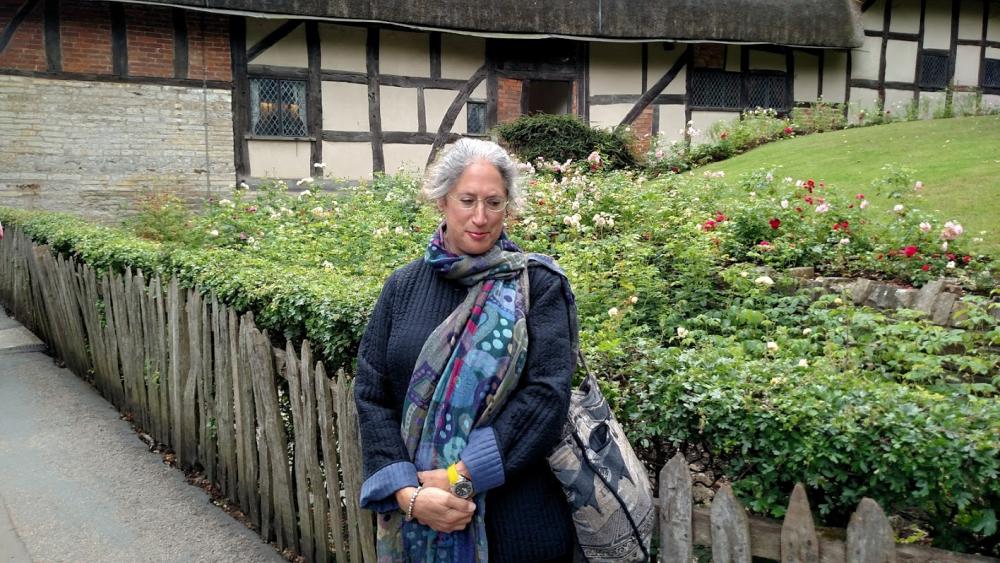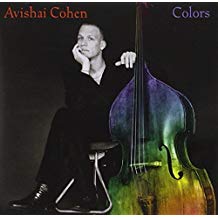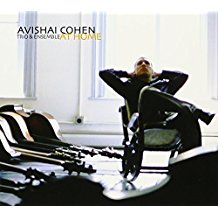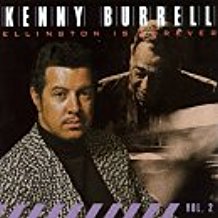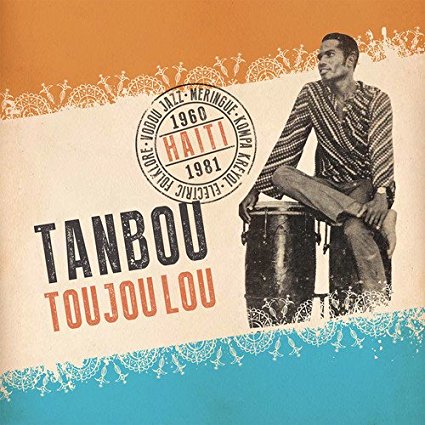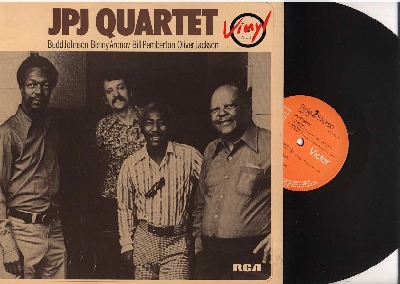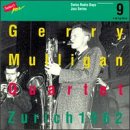-
Posts
13,205 -
Joined
-
Last visited
-
Donations
0.00 USD
Content Type
Profiles
Forums
Events
Blogs
Everything posted by Larry Kart
-
I did too. Only time I enjoyed him on soprano was when he came to the Sutherland Lounge before the release of "My Favorite Things" (this was the quartet with Steve Kuhn, Steve Davis, and Pete LaRoca). I enjoyed it because of the surprise factor (both the instrument and the tune) and because the Ellington band was staying at the Sutherland Hotel at the time, and between sets Trane and Johnny Hodges were talking about the soprano at the bar, passing it back and forth.
-

What Classical Music Are You Listening To?
Larry Kart replied to StarThrower's topic in Classical Discussion
Fantastic set IMO. A bit on the austere side, very clear, beautifully played and recorded, "unified" tempi (a la Horenstein), inexorable forward movement. https://www.amazon.com/gp/product/B00005K36Y?pf_rd_p=d1f45e03-8b73-4c9a-9beb-4819111bef9a&pf_rd_r=1H38EQZJ4425AVREQJRA -
No need for Rudy to move over. There's room for both. Rudy, for one, gave us the reality of how drums sound in a hard bop rhythm section. DuNann was lovely across the board --the clarity, especially with bassists -- but things could get a tad restricted on some sessions, if only because IIRC most Contemporary albums were recorded in a smallish space (that article probably speaks of that). Also I don't recall many, if any, DuNann recordings with larger ensembles, while Rudy (if you liked his approach) was Rudy all the way up to whatever size there was. Not saying that DuNann couldn't have done a fine job with a large ensemble, just don't recall hearing that.
-

Coltrane: Both Directions At Once (lost album)
Larry Kart replied to Sandman's topic in New Releases
I heard Coltrane live fairly often in '63-'64 in Chicago, literally from close up (Elvin's bass drum at McKie's, if you were sitting opposite the band at the bar, was a little more than the width of the bar from your head), and what no recording I know of captured was the relative dynamics involved -- how loud the band's "loud" eventually was after 40 minutes or so (and I also mean how intense) versus the level at which say they might begin a particular piece like "Mr. P.C." Subjective factors are involved here -- the intensity of the music-making per se adding to the sense that the end of everyone's tether had been reached -- but the only thing I've ever experienced that approached it along those lines was Albert Ayler in person. -

What Classical Music Are You Listening To?
Larry Kart replied to StarThrower's topic in Classical Discussion
I just realized that without planning to do so, I now have no less than four recordings of Chausson's Concerto (some say "Concert") for Violin, Piano and Strings. The most recent acquired one is with Zino Francescatti, Robert Casadesus, and Guilet Quartet from 1954 in a 3-CD Music & Arts set of Francescatti recordings; the others are with Cortot and Thibaud and Co. from 1931 (Biddulph); Augustin Dumay and Jean-Phillipe Collard and the Muir Quartet from 1985 (EMI LP); and Elmar Oliveira, Robert Koenig and the Vista Nova Ensemble from 1995 (Biddulph). A superb and substantial work, albeit with some Franck-ian tendencies, the Concerto is a bitch to perform and to record. As the liner note for the Oliveira disc says, "The work is fairly unique in its treatment of the two solo instruments which -- despite the virtuosity required from them -- are not soloists in the sense of either a traditional concerto or a concerto grosso but rather emerge as if in a relief-frieze against the quartet background. Thus the challenge is one of balance, for both players and the recording engineer -- how do we properly weigh these parts again each other and, if we as players do get it right (and no doubt there is more than one way to get it right), has the engineer managed to capture just what we did? The Cortot-Thibaud recording has much cachet, but not so much for me; the sound is 1931, and Thibaud IMO is not in Franscescatti's class. Indeed, Franscescatti's performance would perhaps be a easy winner except that the recording is rather clotted for 1954, and Casadesus is either too reticent or rather dimly captured, I suspect both. Nonetheless, Zino is really "in there" in every way; incredibly seductive and elegant, he sings Chausson's song. Oliveira, by contrast, is perhaps a shade (but just a shade) too forthright, but pianist Robert Koenig is a revelation -- this is the way the piano part has to go alongside the violin and string quartet IMO; the piece's quirky three-way discourse is fully, thrillingly present. Dumay and Collard are pretty good but rather over-heated, though I'll keep their recording for its disc-mate, Chausson's uncompleted string quartet. So it's got to be both Francescatti and Casadesus and Oliveira and Koenig, Anyone have other candidates? BTW, I tried out on You Tube Isabelle Faust and Alexander Melnikov and Co. and Jeremy Denk and a young Korean fiddler and Co. Faust's ensemble has an attractive gentle graininess, but she herself lacks profile or maybe even just chops, while Denk seemingly decided that he had the primary part and just overwhelmed everyone else. Some brilliant playing per se from him, but the work lay in tatters. Chausson's Concerto reminds me of the strange powerful work of the painter Pierre Puvis de Chavannes (see below), which looks or can look quaint and archaic but also can seem oddly modern and certainly had a big influence on Picasso, for one: -
That Stash set, if still available, is a gem. IIRC, it has a nice mix of solo and small group tracks. All broadcast transcriptions, a setting that seemed to work well for Waller. I see Vol. 1 used on Amazon at a great price. https://www.amazon.com/Definitive-Fats-Waller-Rhythm-Piano/dp/B000008CIB/ref=sr_1_1?s=music&ie=UTF8&qid=1530118600&sr=1-1&keywords=fats+waller+stash but not Vol. 2. You'll probably want this one (below): If you have access to a used LP store, the Bluebird LP Waller sets used to show up there fairly often. If the price is right, nab everyone you see. IIRC the notes are excellent. Also, if you see the Time-Life Waller LP set. In fact just about every Time-Life set is worthwhile -- excellent booklets.
-
I wasn't saying anything about what Mosaic should or should not have included in the set. I was commenting on the relative quality IMO (versus other comparable Waller material) of the Waller material that was included. Yes, that's IMO, but I said what I did because the general question of the quality of the Savory set material had quite naturally been raised on the thread and also because, knowing a good deal of other Waller material myself (studio recordings and airchecks) and in face of the enthusiasm for the Savory Waller airchecks on the part of the annotator, I thought it would be worthwhile to say that, again IMO, the Savory Waller performances should be regarded as good but not top drawer Waller and His Rhythm. As for Iverson on Hines' "choppiness" -- yes, it's his opinion but IMO it's not only not a very informed one (one of the great rhythmic masters in jazz, Hines could be smooth or brilliantly angular rhythmically at will -- and BTW aren't informed opinions what one ought to get in a Mosaic booklet?), but it's also an implicitly arrogant, even rather snotty one. Again, "by modern standards"? Are styles or musical approaches in jazz at the mercy of chronology and/or an implicit "progressivism," where the way most players do things in the present or the recent past should be thought of as superseding the way things were done previously? Does, say, the undoubted modernity in its time of the way Chick Corea played on "Now He Sings, Now He Sobs" be thought of as rendering less valid the less smooth playing (in conception and execution) of Monk? FWIW, a passage from the liner notes to Harold Danko's album "Hinesight" (Steeplechase, 2005) -- Danko himself being an eminently modern pianist. "The second time I heard Hines [in person] was in Nice, France, in the late '70s when I was with the Thad Jones/Mel Lewis Orchestra. Being that I was touring on the circuit and playing the same pianos that the most illustrious fingers had recently tickled, I felt that I had 'arrived' and was indeed a happening cat. So when I got a chance to catch a set of Earl Hines it was more out of respect than having any idea that it would shake my musical foundation. The tune was 'Tea for Two' -- to me an 'older' vehicle for running some II-V vocabulary as opposed to getting into more 'interesting' stuff on newer tunes. Well let me tell you -- that was the freest 'Tea for Two' I've ever witnessed, as modern and dynamic as anything I'd heard that summer. He was in total command of everything the piano could surrender to his imagination -- it was unlike anything I could have expected, and I instantly became a devoted fan. I was experiencing a jazz rebirth."
-
Great pix. Lynet has a lovely smile.
-
Moustachioed since November -- tried it before many years ago but didn't stick with it. Suspenders for the same reason you use them; devolution of ass into nowhere, pants won't stay up with a belt, no matter how much it's tightened. Actually, for some reason I look far more haggard in that "honest" photo (above) than I really do these days; the contrast between how I look in in that photo and in the one from Tanglewood with Julie maybe five years before kind of shocked me. I think the "honest" one (a selfie) must have been taken on some very grim winter day. Certainly the two of us were having a good time at Tanglewood. Some ofJulie's many moods: 1) In the morning (have no idea about the meaning of that purple bandage) 2) At Anne Hathaway's cottage 3) At a high school basketball game; we go fairly often because Sawyer is a member of the pep band, plays alto sax (very good, too)
-
In 1976: Jeanne, Jacob, and my late mother Ruth Julie (after I recommended that she should stop coloring her hair) and Scout the wonder dog Me a month or two ago, just to be honest. Baby, the rest of the family.
-
My stepson Sawyer at the Fogg Art Museum on Saturday -- Leaders, past and future. My son Jacob making modular synth music, at which he's very good. Much of his work can be found at Bucketbrigade on Soundcloud. My late wife Jeanne in the late '70s or so, flying a kite (she was very good at that and at just about everything -- a world-class potter eventually) . My wife Julie and me at Tanglewood several years ago.
-
-
Good points. I'd add something that I think Gerry Mulligan or Al Cohn once pointed out -- that if you were an adolescent would-be jazz musician in, say, 1937-8 listening to band remotes night after night while you also were of course familiar with the commercial recordings your favorite bands had made, hearing Lester Young or whomever play new solos on their featured numbers on radio remotes gave those young apprentices a living sense of possible/permissible variation. Gerry or Al explained that this was a significantly different matter than dissecting/emulating a favorite recorded solo, which of course has value but lacks the reality test, so to speak, of listening to Pres re-shape/reinvent "Taxi War Dance" or "Every Tub" several times a week.
-
Yes, that's my basic complaint, plus what Big Beat Steve said -- "too much talk about HOW great the music is instead of analyzing WHY it is so great," especially when Loren in previous Mosaic booklets has done the latter quite handsomely -- e.g. the brilliant passages about Dave Tough in the Woody Herman set. As for the cuts that are not worthy of praise, I'm still working my way through the Savory set, but I was underwhelmed by the Waller broadcast from 1938 on Disc I -- and I'm a Waller admirer par excellence. These tracks IMO are certainly not up to the level of, say, the 1939 Waller and His Rhythm broadcast on the 2-CD Stash set "The Definitive Fats Waller." Also, the paragraph from Ethan Iverson that is inserted into Dan's notes on the Waller material is gratuitous ("However, all that jolly joshing [from Waller] obscures just what a fine pianist he is" -- really? obscures for whom?) and IMO both gratuitous and bizarre -- "Most importantly, Waller's relaxed swing remains a gold standard for the era. There are times when James P. Johnson, Eubie Blake, Willie 'The Lion' Smith, and Earl 'Fatha' Hines seem a little choppy by modern standards. That's not true of Fats, whose smooth swing remains timeless." Hines, for one, was "a little choppy" -- this "by modern standards" no less -- while Hines' sense of swing is apparently less than "timeless"? Oy vey.
-
As to what happened -- and others my feel otherwise about the notes than I do -- I have several guesses, though they're only guesses: 1) As the notes explain, almost from the first Loren Schoenberg was "in" on the find and the difficult process of getting the Savory material out; thus he may have felt a kind of pride of ownership that distorted his normal approach of what to say about the music, which has stood him in good stead on previous Mosaic sets. So perhaps "pride of ownership" led him at times and IMO to write as though he were selling this music to us. 2) There may have been time constraints/some urgency to get the set out ASAP, which led Mosaic and/or Schoenberg to bring in others to add comments/bear part of the liner notes burden. Dan Morgenstern's presence goes without saying, and would that he had done much more. At the moment I don't feel like singling out those writers whose contributions seem "off" to me; I already have enough of a censorious bastard reputation.
-
I've found the liner notes, compared to many previous Mosaic sets, to be a real hash at times; Loren Schoenberg is not at all the top of his game IMO (at times it's like he SELLING the set to us; hey, we've already bought it), and there are some semi-pointless or worse contributions from other writers. Thanks be, Dan Morgenstern remains calm and himself.
-
Picked up this two-LP 1977 set: https://www.amazon.com/Ellington-Forever-Vol-Kenny-Burrell/dp/B000000XHF/ref=sr_1_2?s=music&ie=UTF8&qid=1529336962&sr=1-2&keywords=burrell+ellington at an estate sale the other day for $2 and have been pleasantly surprised. Nice mix of players (Joe Henderson, Jimmy Smith, Jerome Richardson, Snooky Young, Thad Jones, Gary Bartz, Quentin Jackson, Nat Adderley, Philly Joe, Jimmy Jones, Roland Hanna, et al.) in shifting groups of various sizes, and everyone (Burrell included) seems relaxed and very engaged -- it's like a party where all involved are happy they've been invited and are having a good time. Smith's unusually thoughtful linear solo on "A Train," for example, is a gem, and Hanna's comping and solo work are superb. Vol. 1 (recorded several months before) is said to be even better; I've ordered it. Only drawback is Fantasy's somewhat claustrophobic mid-'70s studio sound, but the ear adjusts.
-
Description: "Meringue, Kompa Kreyol, Vodou Jazz & Electric Folklore from Haiti 1960 - 1981 Selected from an array of private collections and radio archives in Brooklyn, New York, and multiple digging trips in Port-au-Prince, Jacmel, Gonaives, and St. Marc, Haiti, are twenty tracks that encompass the vast diversity of styles during the seminal years of musical innovation and percussive potency in Haiti. From the legendary, elegant big band dance parties in iconic nightclubs of Port-au-Prince to the rhythms of the countryside; from accordion-driven meringue and Vodou-derived drum patterns, to hypnotic tenor sax arrangements and psychedelic interpretations of folklore, the music of 1960's, '70's, & '80's Haiti enjoys a royal repute across the Caribbean, West Africa, and the Colombian coast." https://www.amazon.com/s/ref=nb_sb_ss_i_1_6?url=search-alias%3Dpopular&field-keywords=tanbou+toujoulou&sprefix=tanbou%2Cpopular%2C2596&crid=2HSF6B6V5G17K FANTASTIC MUSIC.
-
A post from a retired military man in his late 70s: "We stopped watching Bourdain about a year ago. He was always entertaining and informative, but the pain and desolation in his heart became so evident that I, for one, could not bear it any longer. "His account of his teen years as a kitchen assistant in a seaside resort was particularly hard to watch. I worked in such places during high school summers in coastal Maine as bus boy, dish washer, baker's assistant, soda fountain ice cream guy, fry cook, short order cook and breakfast cook. The drugs, sex and rock and roll that he described in one program saturated the atmosphere with their seasonal people blend of professional restaurant workers, local kids, tourists and college girls on the loose for the summer. That atmosphere ate him alive and I do not think he ever recovered from it. A profound sense of ennui settled over him that he never shook off. He may well have had a genetic disposition toward clinical depression but the cocaine, heroin and massive amounts of alcohol did not make it any better. "We still have recordings of some of his best shows. One was in Lyons and two were in Quebec where he was entertained by two zany Qubecois restaurateurs. Their feast, cooked up in a nice little building sitting on a frozen lake, was memorable. There were a lot of courses but I particularly liked the 'bit' in which they grilled foie gras on the flat top of a wood burning stove. "For me, his saddest show was focused on a trip to what had once been a laird's hunting lodge in the Scottish Highlands. It is now a place of amusement for fat-assed City of London bankers and the like. There he was walked up into the hills, loaned an expensive rifle and pointed at a majestic stag. He dutifully shot the beast and was escorted down to the corpse where his keepers painted his face with the animals arterial blood in a ceremony that once had an animistic meaning but now has none. I shot a lot of deer in my youth but was always just a pot hunter going to the woods to stay with my friends and uncles. I have always been strongly affected by the logo from the film "The Deerhunter," in which the wings on the Army parachute badge are replaced with the antlers of a stag. Bourdain's face smeared with the elk's blood brought that to mind.”
-
Budd Johnson (in boisterous form and vividly recorded), Ben Aronov (taking over from Dill Jones), Bill Pemberton, Oliver Jackson.
-
Yeah -- I noticed that. I got mine at a used book store yesterday for $4.99.
-
_forumlogo.png.a607ef20a6e0c299ab2aa6443aa1f32e.png)


